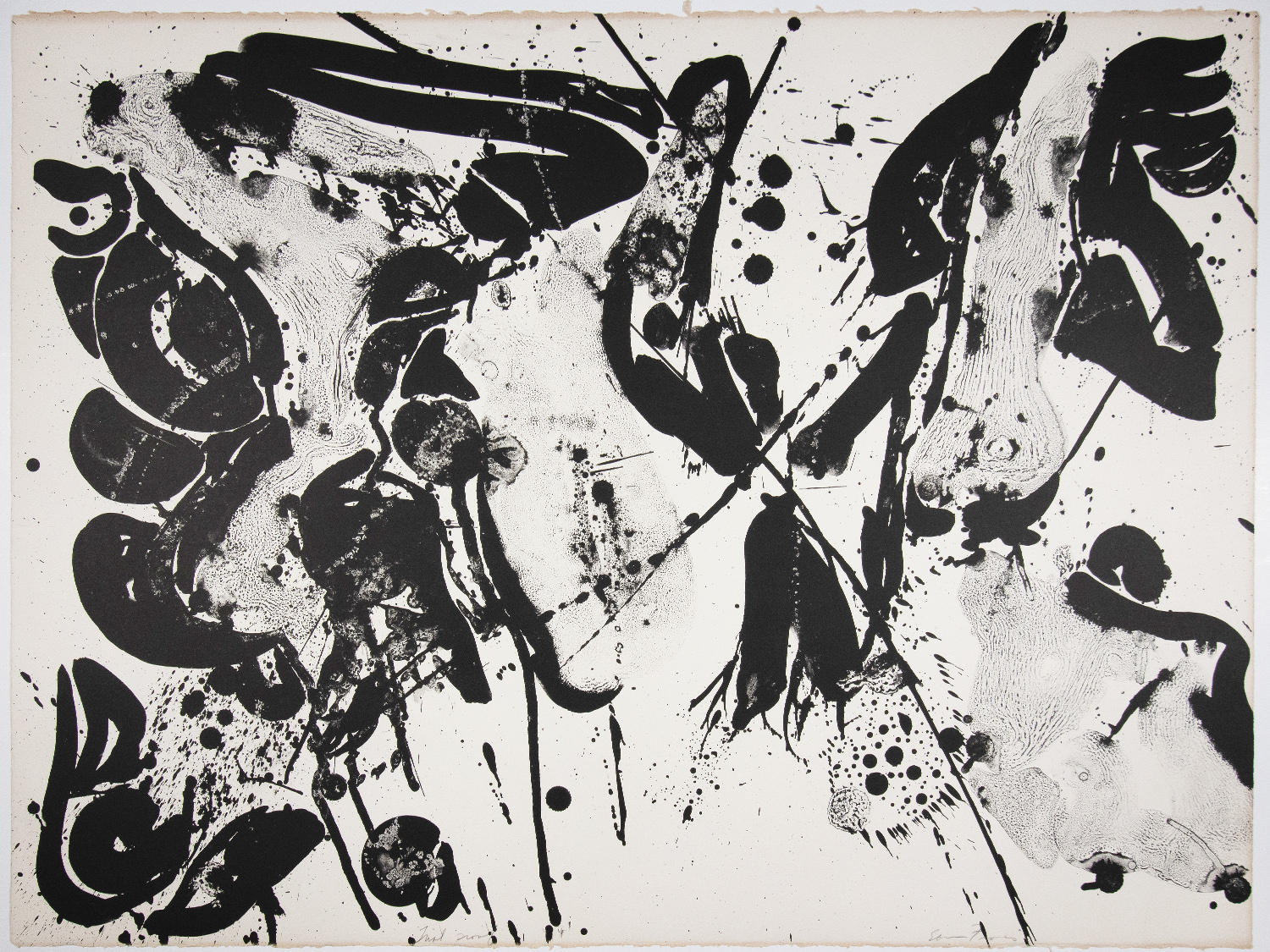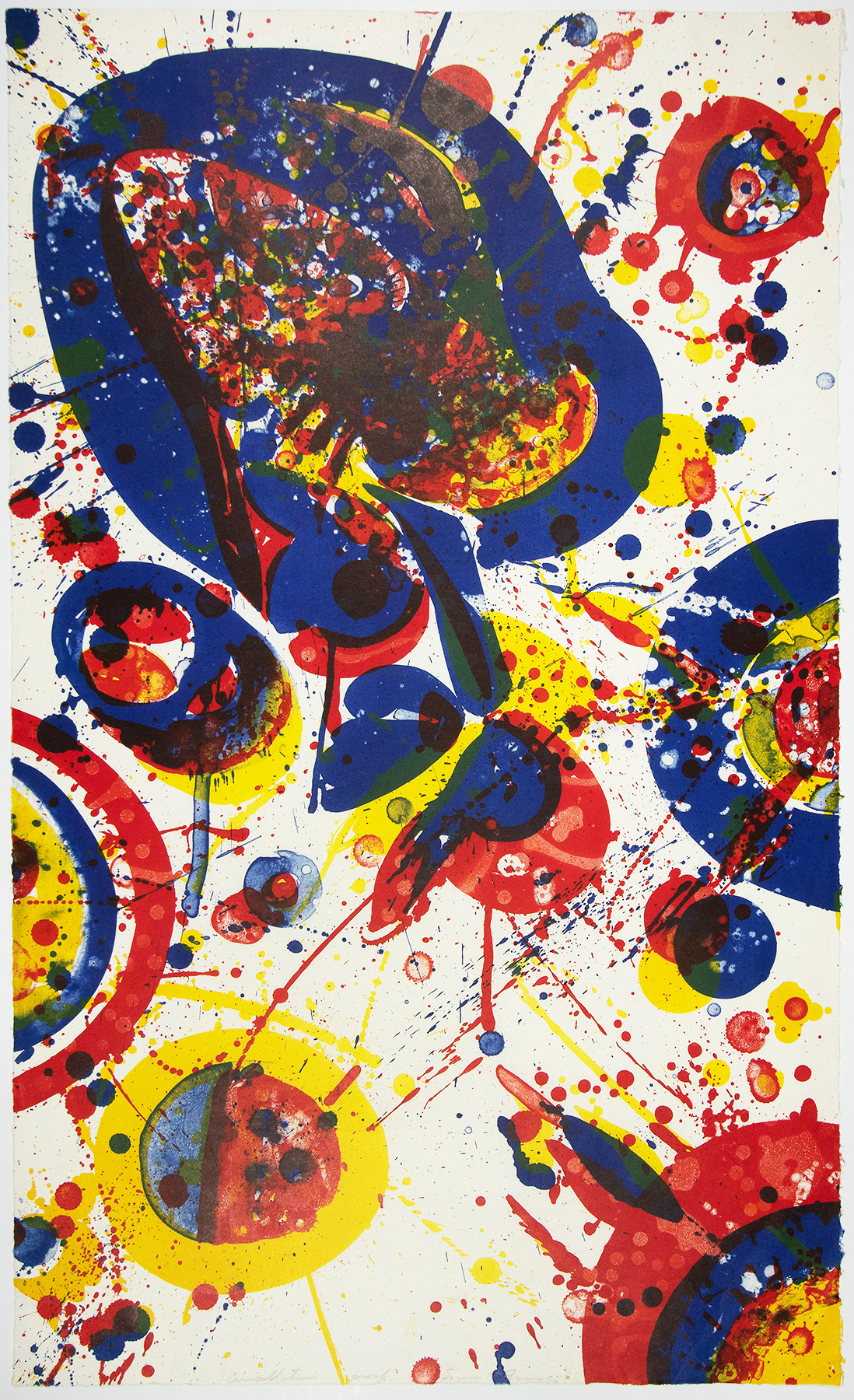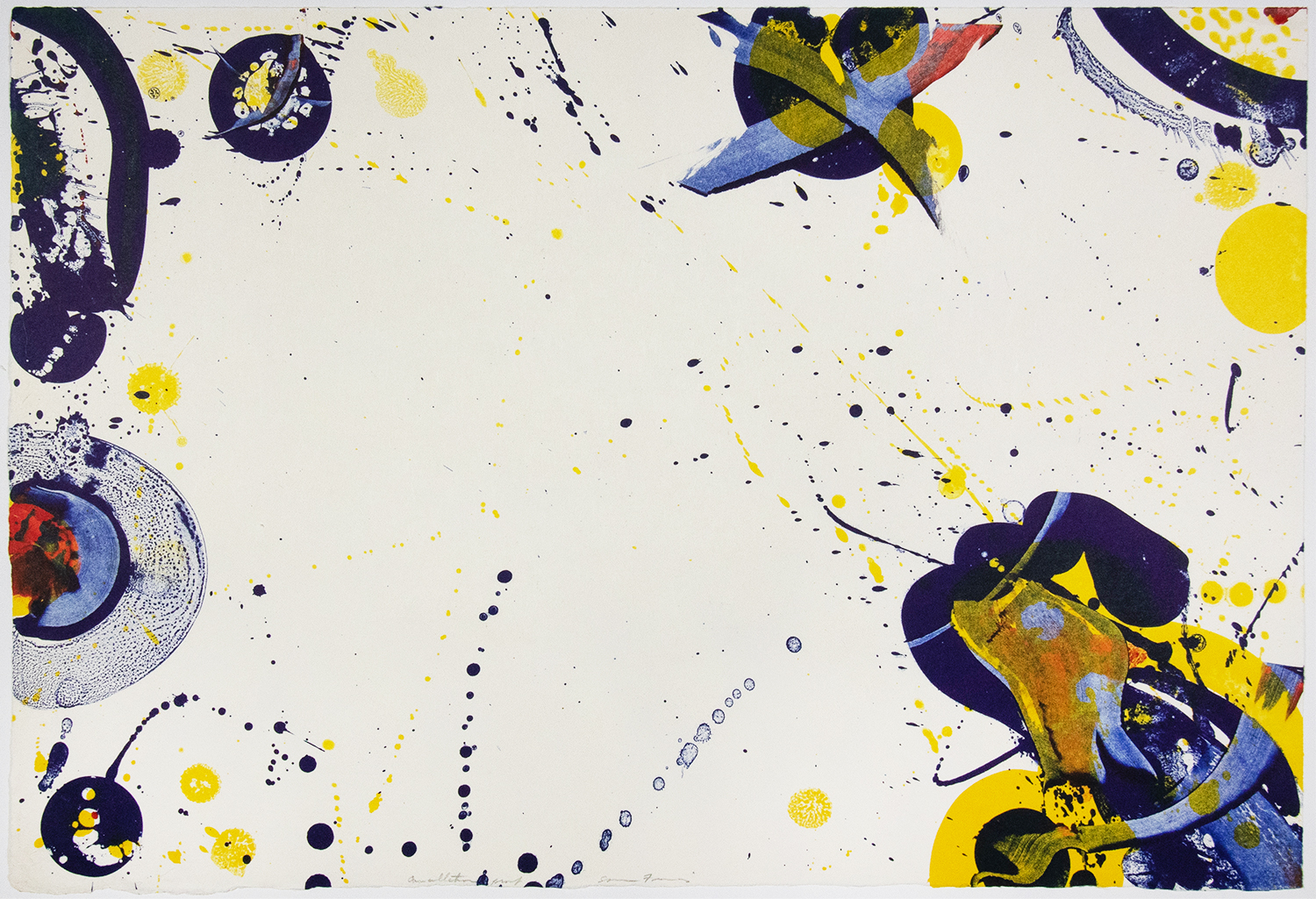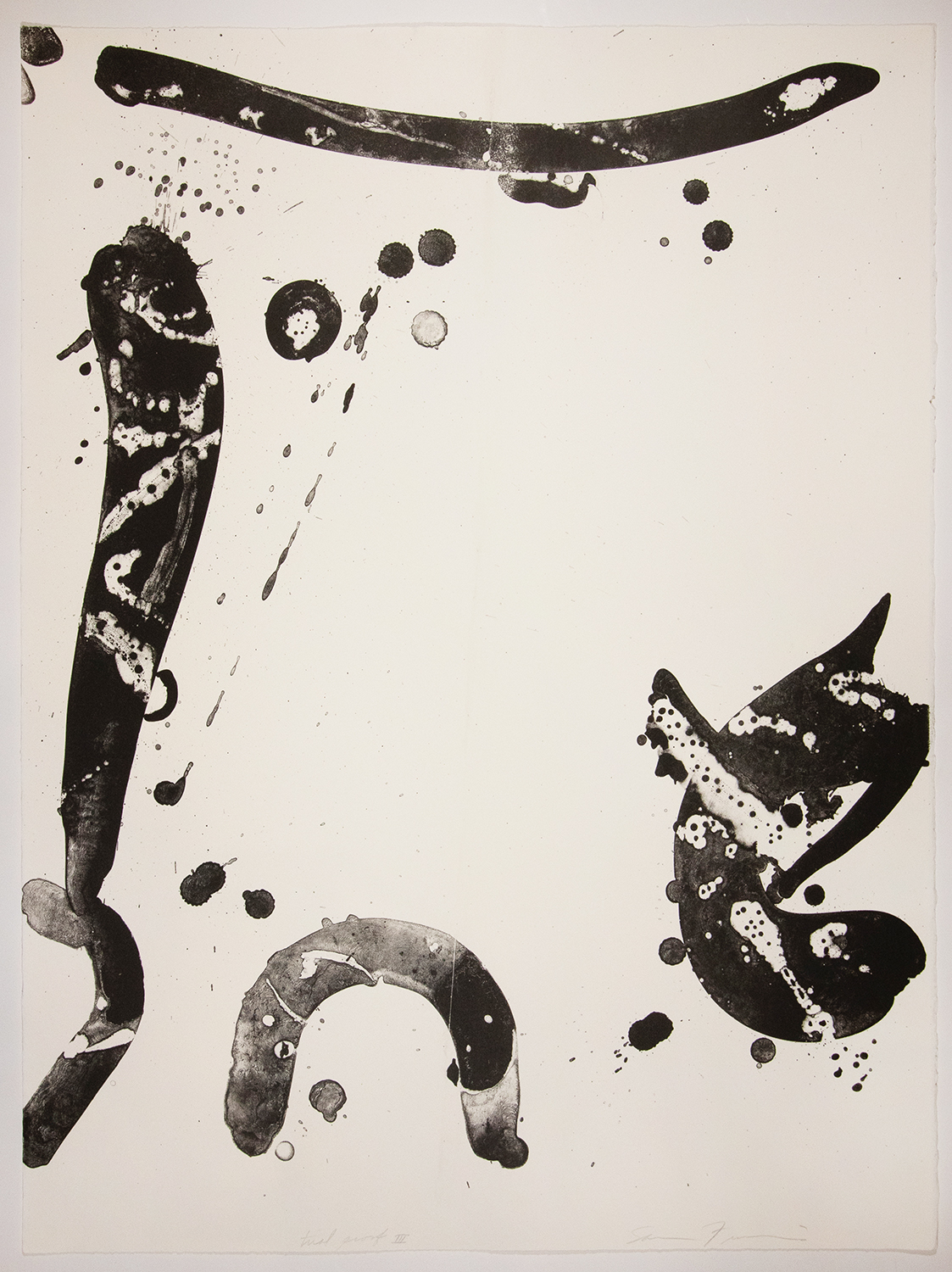SAM FRANCIS: SPECIAL PROOFS
October 15 – October 31, 2021
Sam Francis working with master printer George Page in the Litho Shop, Broadway studio, Santa Monica, 1980. Photo Photo © Kurt Blum / Fotostizftung Schweiz, Winterthur.
SAM FRANCIS: SPECIAL PROOFS
AT JONATHAN NOVAK CONTEMPORARY ART
Sam Francis made a large number of editioned works during the course of his artistic career. When an artist has printed all the works that comprise an edition (including artist proofs, trial proofs and “states”), a cancellation proof is created. These editions comprise the final “pull” from the plate, and, generally, the artist or the printer will deface the plate itself before making the proof. The purpose of these proofs is to ensure that the edition is truly limited and that no further prints can be made. But Sam, being Sam, didn’t always do things the conventional way. He frequently turned the cancellation print into its own unique work of art. Francis, along with Jasper Johns, Robert Motherwell and David Hockney, saw the creation of cancellation proofs as another opportunity for creative pursuits. Francis achieved this goal by employing a variety of techniques: executing the proof using only some of the colors from the original, printing only a portion of the etched areas, printing on smaller or larger sheets, and other methods of transforming the work.
Jonathan Novak Contemporary Art is pleased and honored to have the opportunity to showcase some of these works from the Sam Francis Foundation. We are exhibiting a series of 34 special proofs from the foundation archives; these works are being presented publicly for the first time. Most are cancellation proofs, although some are trial proofs and other “special editions.” The proofs truly deserve a closer analysis and are a window into Francis’s innovative approach to every aspect of his artistic endeavors. Francis was deeply committed to producing printed works—so much so that he opened his own printmaking facility, The Litho Shop. No other abstract expressionist of the era created the volume of printed works that Francis did over the course of his career.
Debra Burchett-Lere, director of the Sam Francis Foundation, shared some of her thoughts regarding these proofs:
“My experiences working with artists and printmaking (I worked at Gemini for 10 years also) is that the cancellation proofs are part of the entire process and actually sometimes equally as beautiful, insightful, and creative as the original editions. There is a growing interest in collecting these proofs — as they offer further clues to the artist’s processes.
I find all aspects of a print edition—that includes the BAT (or RTP copies), the edition copies numbered, the artists proofs, special proofs, unique proofs, trial proofs, color trial proofs, and various other types of proofs—are all important parts of the composition. It’s a way of documenting different levels of the creative process.
Even MOMA shows them now…so they essentially have the same values in my opinion, and in some instances even more if there is hand painting, notations, etc.
The important factor in cancellation proofs is that usually they are documented in some way, i.e. with a signature, number, the words “cancellation proof,” etc. but this is not always the case as artists like Francis would often use unsigned and unnumbered proof prints to paint on — creating unique works or combination prints with papers that were lying around in his studio.”
The selections we present in this exhibition vary in many ways from the works that comprised the regular editions. For example, when comparing An Other Set – X, from the Pasadena Box (SF-73) (L-65) with the cancellation proof, the only perceivable difference is the absence of the silk scroll on which all of the works in the Pasadena Box series were mounted.
On the other hand, the edition of Damp (SF-90) (L-104) is a 4-color lithograph, but its corresponding cancellation proof is in one color only and not a color that was used in the original (see illustrations below).
In the final comparison, we examine Chinese Planet (SF23) (See illustrations below). The regular edition of the work and the cancellation proof are very similar regarding composition. However, in this case, Francis has chosen to leave out the red pigment in some areas of the cancellation proof and also to make other subtle adjustments and one obvious adjustment which is the red “x” through the blue ball in the mid right section. He also made a Variant Proof of the work using only the upper left section and reversing the color pattern. The verso of the Variant Proof is a partial print using only the red pigment and with markings that are distinct from the recto and don’t appear to be “bleed-through” from the other side.
Examining these “special proofs” has been a revelation and offers an even deeper insight into Francis’s process of making printed works by highlighting the close alignment of the compositional elements in his printmaking and paintings over time. This collection demonstrates the power of Sam’s printmaking, not only in a wide array of colors, but also in more subtle greys and blacks. When his archetypal forms are rendered in softer tones or with fewer color combinations, the impact is not diminished. It is fascinating to observe the variation from monochromatic palettes to varying levels of color in these printed works. We hope you enjoy exploring this unique collection of works as we are delighted to share them with you.


































